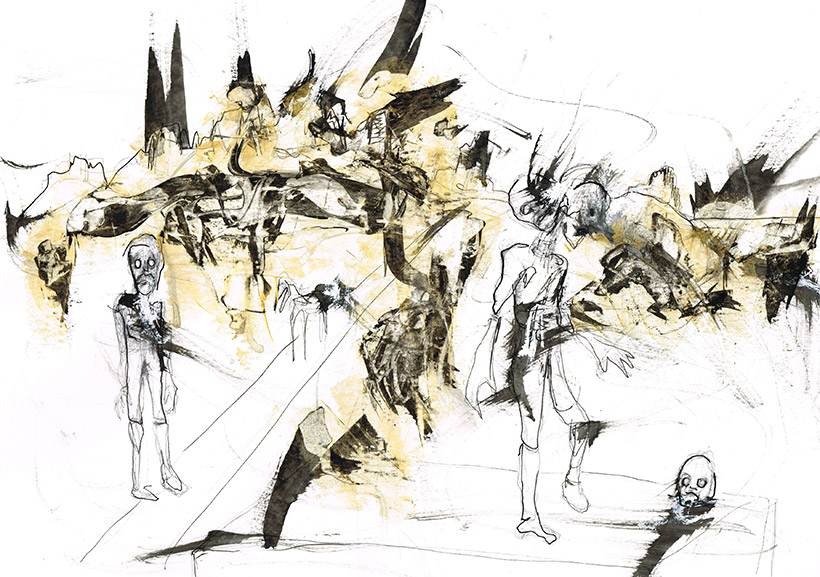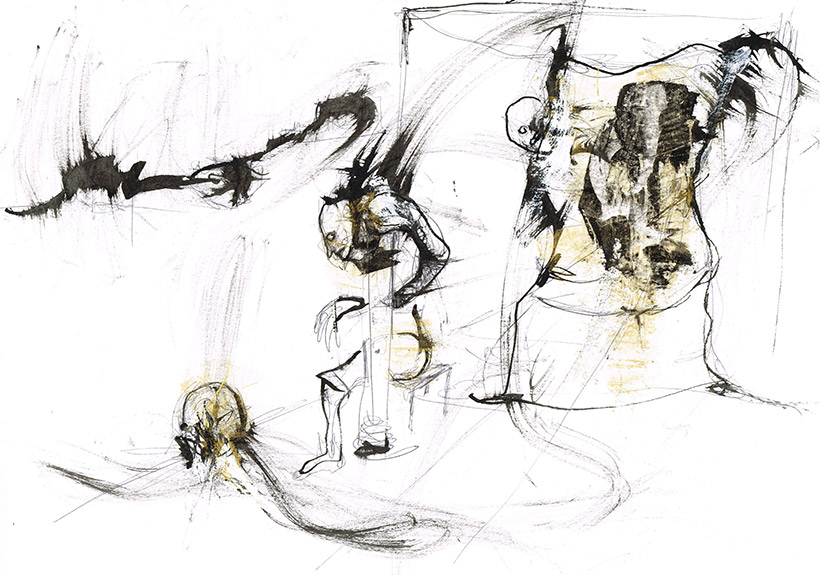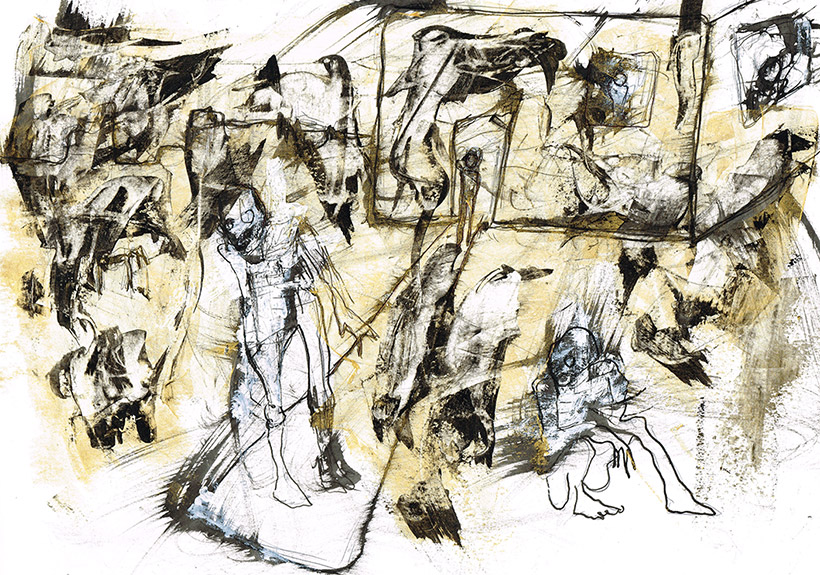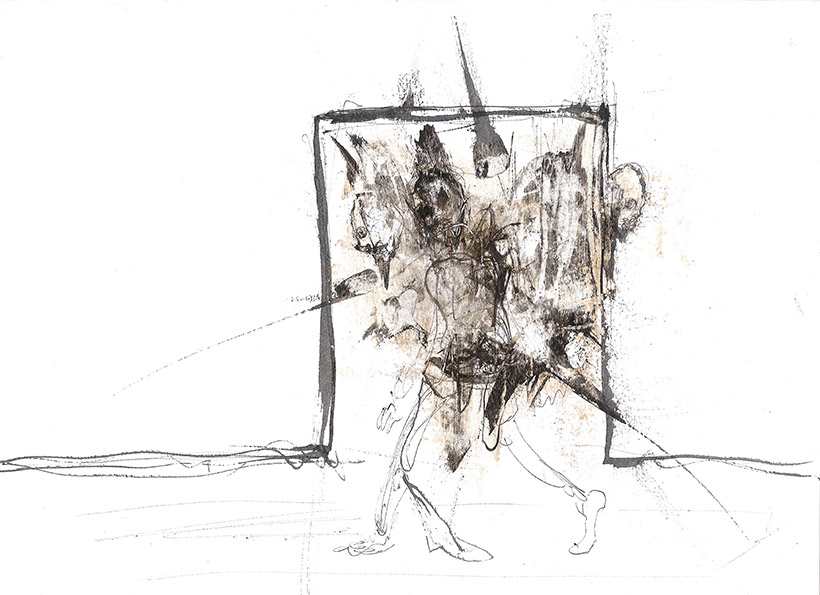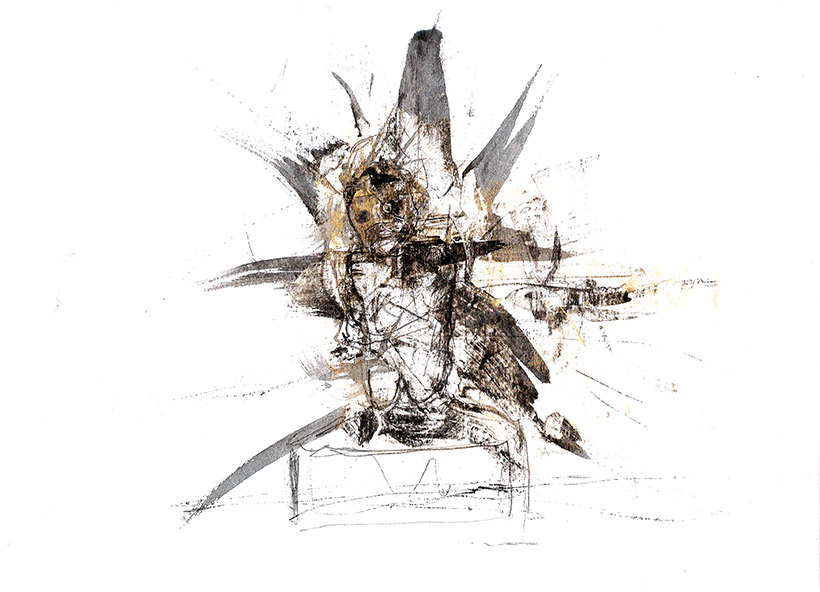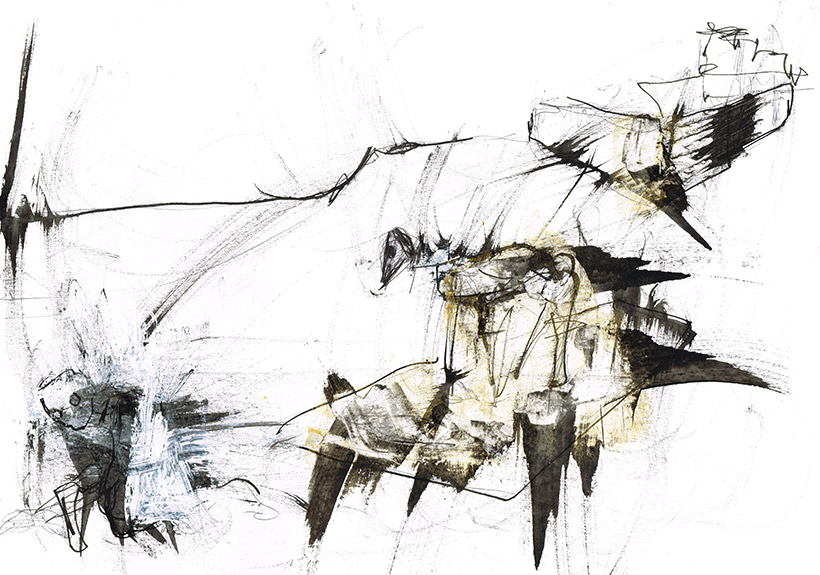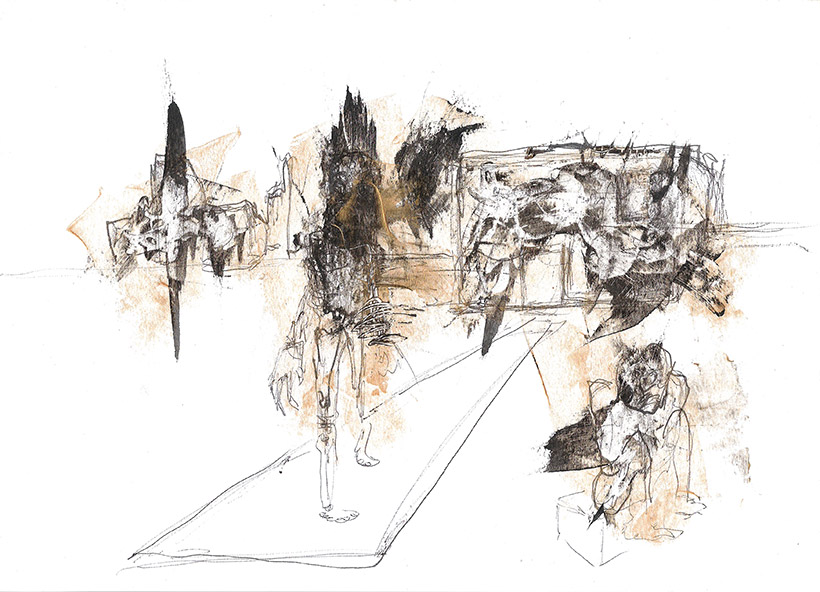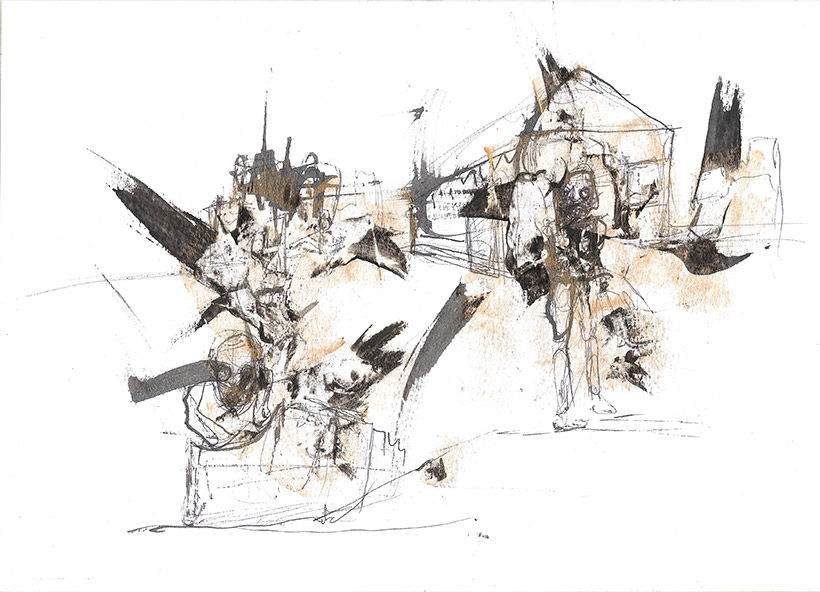Suzannah Showler: Can you tell me a little bit about your process? Where does a drawing begin for you?
Ivan de Monbrison: For me, a drawing always begins with the figure. A drawing, as opposed to painting, is always related to the figure, even if this figure turns out to be a landscape. A landscape is also a figure, somehow, but a horizontal one.
Drawing begins with the hand, too—the movement of the hand on the sheet of paper. The distance between the paper and yourself—holding the paper at arm’s length—is what brings out the piece. This is opposed, for instance, to working on a computer, using Photoshop. With the computer, the relationship is cerebral. Nowadays, we (human beings) seem to have lost touch with our physicality.
As Giacometti said, ‘Do you paint with your eye or with your hand?’ Maybe it has to do with the space dividing the two.
I don’t really think about this as I begin to draw the lines. I have some sort of a pattern in my head which I follow. If I am lucky, I will find something new within this pattern as I draw on, but it is a very unconscious process.
SS: Hearing you talk about the landscape as a horizontal figure makes me think about the TGV [high speed rail] between Paris and Marseille, the two cities where you live. How do you divide your time between them? How do the two cities influence your work?
IDM: Marseille is an amazing place. It is both African and European. The drawings in this series are totally influenced by it: the seas, the mountains, the roughness of the south with its blazing sun. Paris is more cerebral, more like New York somehow. It has lost a lot of vitality with the recent gentrification of its center. In many ways, Paris has lost its soul.
Marseille, which is one of the poorest city in Europe, is still filled with life up to the brim. As Ramadan begins today, I can hear the muezzin from a nearby mosque even though I am living in the core of the city.
SS: It’s interesting to me that you describe both technology and Paris as cerebral. Do you think that there’s a way for people to get back in touch with something more physical, or more vital? Is that important for art?
IDM: Maybe the fact that modern cities tend to be so similar to one another makes them less interesting. When I was a kid going from France to Italy was really a big change; nowadays, it’s much less of one. With globalization, people tend to live the same way in most areas of Europe.
Marseille, being very poor and full of immigrants, is still untouched by this phenomenon. The weather is also much more contrasted than in Paris, with the land quite dry and the sea and the mountains all around it. I guess all of this must make a difference for many artists, including me.
SS: In your artist statement, you describe painting as a “bridge to the past.” I was wondering if you could talk a little bit more about that and what it means for you.
IDM: The past is all we have. Our memory—and thus our consciousness—is built on it. But at the same time, we physically live in the present moment. This is a contradiction art is meant to resolve. The process of art, at its core, uses the patterns of memory, of past events, and builds them all over again, but in the light of the present.
Of course, modern technology is destroying this very fast. The question is not: will art disappear? Art has already disappeared. Andy Warhol probably gave it its last blow. The question is: if art has disappeared, why do people keep on doing it?
So, for me, to make art is to try to pursue an ancient ritual totally antagonistic with the modern world. Thus it is a bridge with the past.
SS: You’re also a published poet and novelist. How do writing and making visual art relate to one another for you?
IDM: For me, these are two different processes that are never really connected to one another. To write is really to dwell with memory. It is a way to retain moments and events of the past which I wish to transmit to the reader.
Painting and drawing are more about pure emotions, sensations. It is more of a universal language (in all senses of the term), while poetry or prose very often require some knowledge of the background in which the writer is grounded.
For instance, right now I just have split up with my girlfriend, so I am in a very neurotic state of mind, very confused, and I can’t really write anything down, especially prose. While, on the other hand, this state of mind is very good for painting, because this confusion, this chaos can very easily be conveyed, transcribed on the canvas.
Usually, I don’t write and paint in the same span of time. I’ll do one or the other for several months. When my life was very settled and quiet last year, I used to write a lot and paint less. But then if, like now, some new event occurs that upsets me, I’ll switch back to the other medium.

